Not a tour today, but after several days of office work and with bright, sunny weather forecast, it was a great opportunity to get out birding for the day.
I started at Choseley. There have been up to three Rough-legged Buzzards here, although they appear to be wandering over quite a large area. One of the three seems to have settled into a pattern of sitting around in the fields here in the morning. When I arrived, some other people were looking at a Common Buzzard perched in the top of a hedge, but a quick scan of the fields revealed the Rough-legged Buzzard stood in the field beyond.
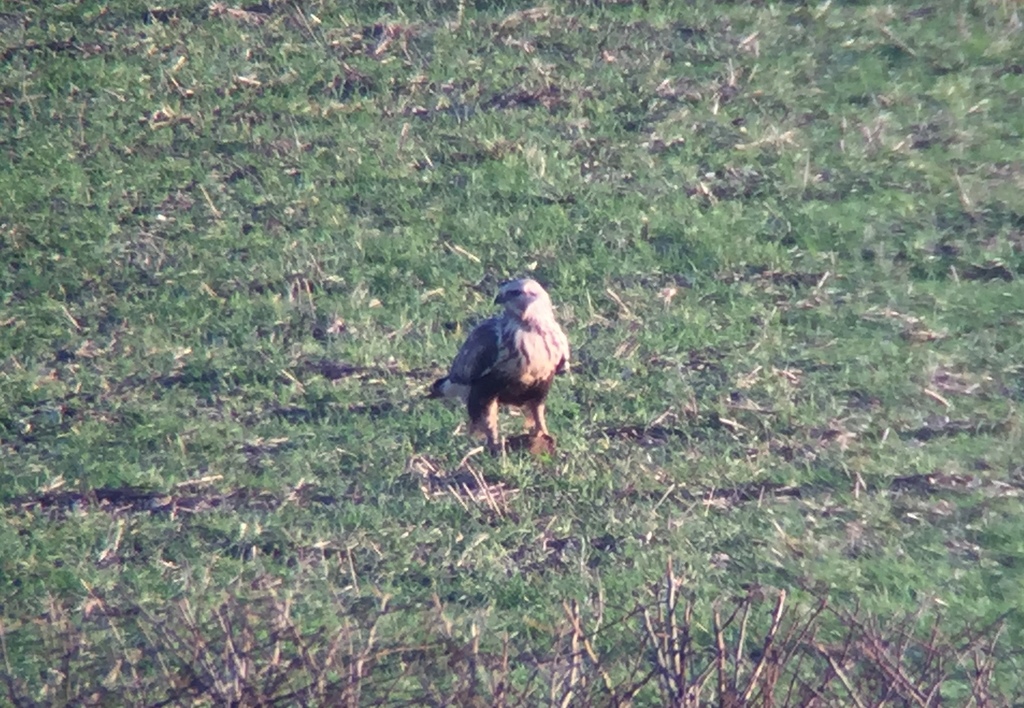 Rough-legged Buzzard – regular at the moment at Choseley
Rough-legged Buzzard – regular at the moment at Choseley
Rough-legged Buzzards are the northern cousins of our Common Buzzards, breeding in northern Scandinavia and Russia and normally wintering in central Europe. The birds we get here are normally juveniles, dispersing south after a good breeding season they can wander further west and reach the British Isles. On the ground, the Rough-legged Buzzard is distinguished by its very pale head and breast, contrasting with a dark blackish belly patch. In flight, the Rough-legged Buzzard shows a very obvious white tail with a dark blackish band across the tip.
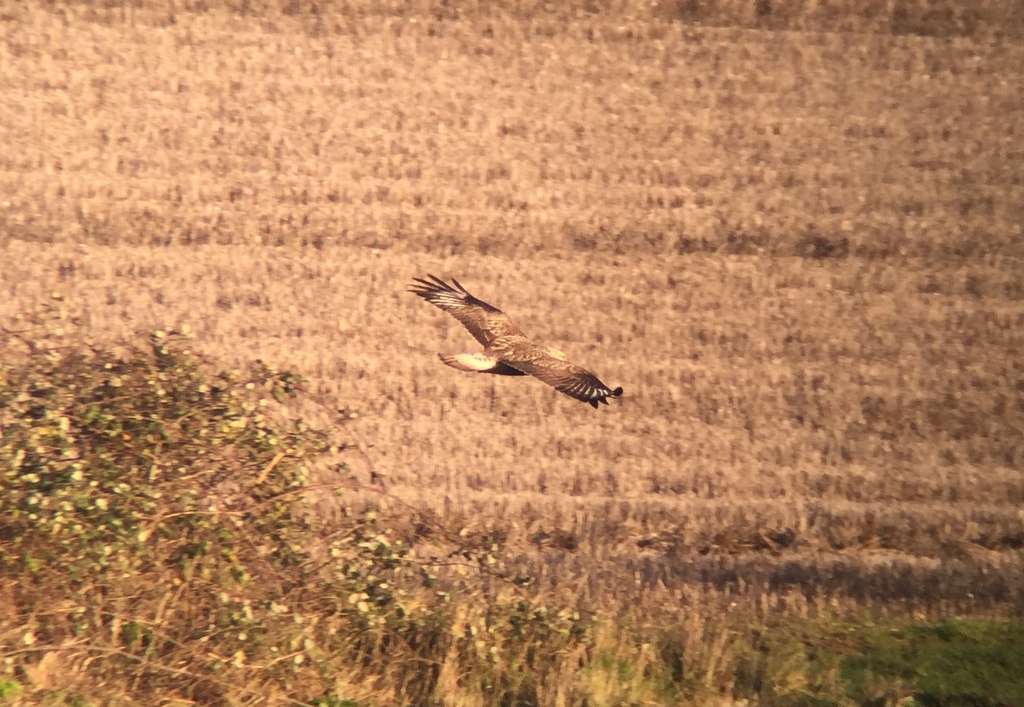 Rough-legged Buzzard – showing the distinctive white tail base
Rough-legged Buzzard – showing the distinctive white tail base
This particular Rough-legged Buzzard has taken to playing with its ‘food’. At times it does appear to be feeding, but on other occasions it is clear that what it has actually ‘caught’ is a clod of earth. Presumably, it is just practising!
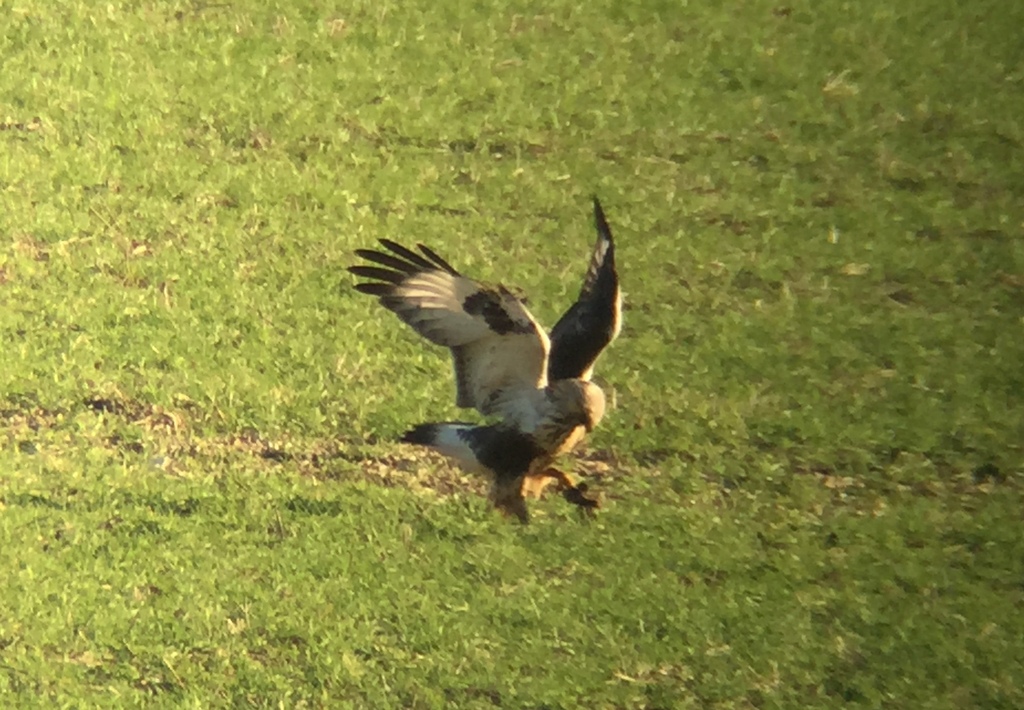 Rough-legged Buzzard – playing with its ‘food’
Rough-legged Buzzard – playing with its ‘food’
I managed to get some video of it doing this, which is linked below:
It flew round a couple of times, but kept returning to the same field. While we were watching it, a second Rough-legged Buzzard appeared briefly over the trees beyond. There were also at least four Common Buzzards in the area, and one of them was feeding on a kill on the hillside beyond. Eventually the first bird we had been watching flew round and drifted over towards the kill, stooping at the feeding Common Buzzard but failing to displace it, before drifting off.
It was time to move on, so I dropped down to the coast at Thornham and parked at the harbour. I wrote about the Shore Larks last week, but as I was in the area and they are one of my favourite winter visitors, I could not resist a return visit. The birds had been flushed when I arrived, but thankfully the three of them quickly returned to their favoured area and resumed feeding.
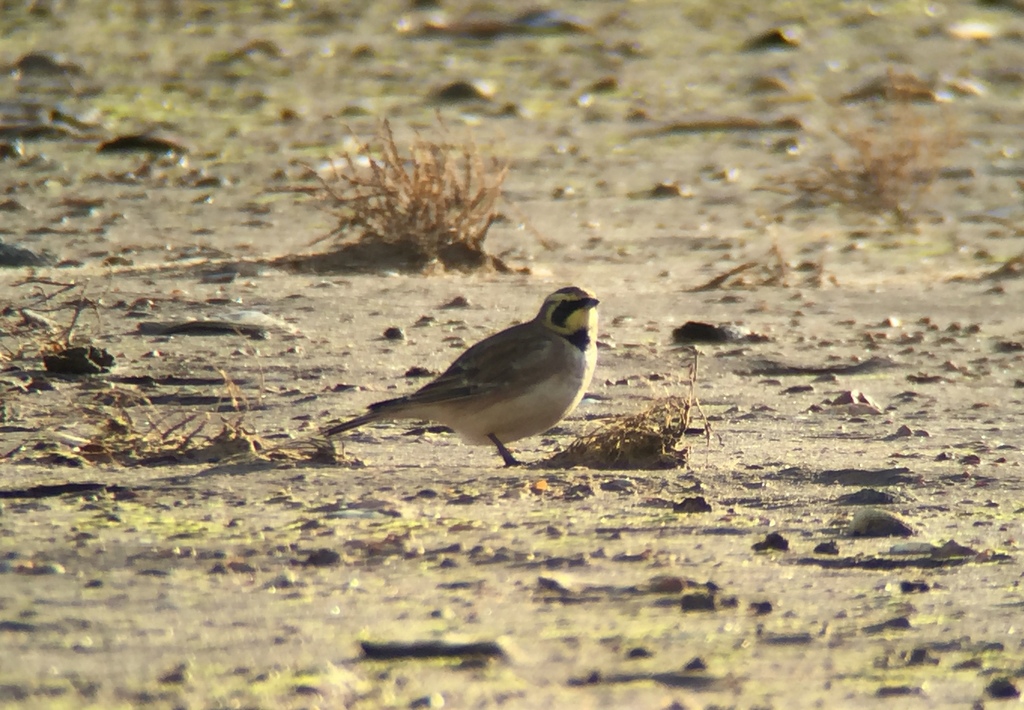 Shore Lark – one of the three still at Thornham Harbour
Shore Lark – one of the three still at Thornham Harbour
The Shore Larks were distant at first, out on the beach, but as we were watching them they suddenly flew in and landed on the shingle much closer to us on the edge of the dunes. After digging around in the stones for a couple of minutes, they then flew down into a dune slack just behind us and started to feed in the dead vegetation there, looking for seeds.
 Shore Larks – the two duller, more streaked birds
Shore Larks – the two duller, more streaked birds
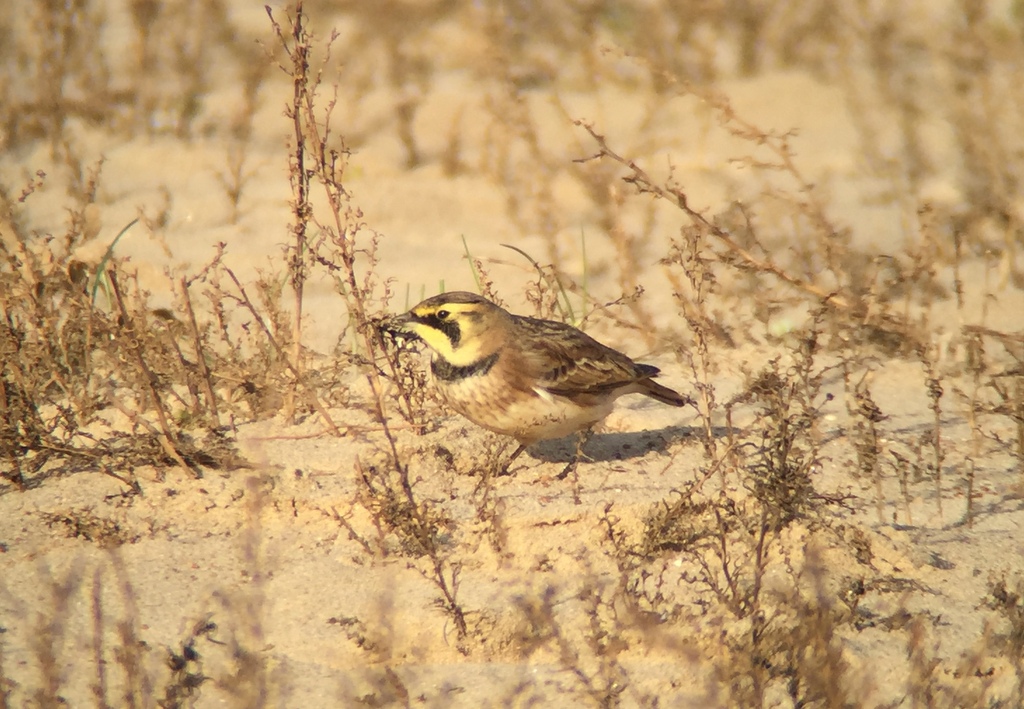 Shore Lark – one of the duller bids again, in the dune slack
Shore Lark – one of the duller bids again, in the dune slack
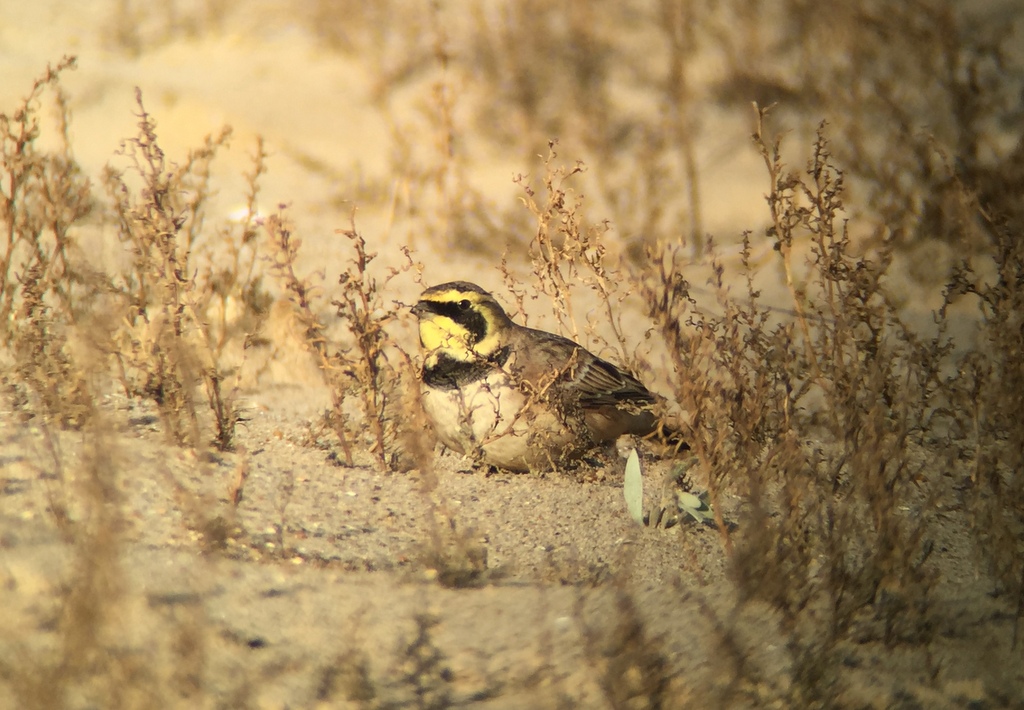 Shore Lark – the brighter bird, presumably a male
Shore Lark – the brighter bird, presumably a male
There was no sign of the Twite in Thornham Harbour on my way past today, though they have been feeding further out on the saltmarsh in recent days apparently. I had a couple of things I wanted to do in the afternoon, and time was pressing, so I headed off.
I had just enough time to call in at King’s Lynn docks. There has been a juvenile Iceland Gull here for a week or so now. A large group of gulls generally hangs around by the outflow from the seafood processing works, but when I arrived in the middle of the day there were no gulls at all there today. Instead, they were all loafing on a sand bank on the other side of the river. Thankfully, another birder had just seen the Iceland Gull fly in to join them and it was easy enough to pick out, looking rather pale overall with distinctive long, whitish wing tips.
 Iceland Gull – a juvenile, with whitish wingtips
Iceland Gull – a juvenile, with whitish wingtips
It was not the best view, as we were looking into the sun, but nice to catch up with given I was in the area. The gulls seemed in no rush to return to feeding and as I had a pressing engagement elsewhere I didn’t stop long.
The juvenile Pallid Harrier has been hanging around at Snettisham for over three weeks – hopefully it might now stay here for the whole winter. It seems to have settled into a routine, sometimes being seen in the morning but generally disappearing for much of the day before returning in the afternoon. When I arrived at Snettisham, it had not been seen all day and many people were leaving as I walked along the path, despite my advice to some I passed that it might be worth hanging on a little longer!
By the time I reached the southern end of the pits, the Pallid Harrier was already back – five minutes earlier than it should have been! Still, I managed to get set up quickly and had fantastic views of it hunting along the edge of the saltmarsh in front of the remaining crowd. It is a great bird to watch in action – slim, pointed wings very different from the local Marsh Harriers and buoyant wingbeats give a very falcon-like impression in flight.
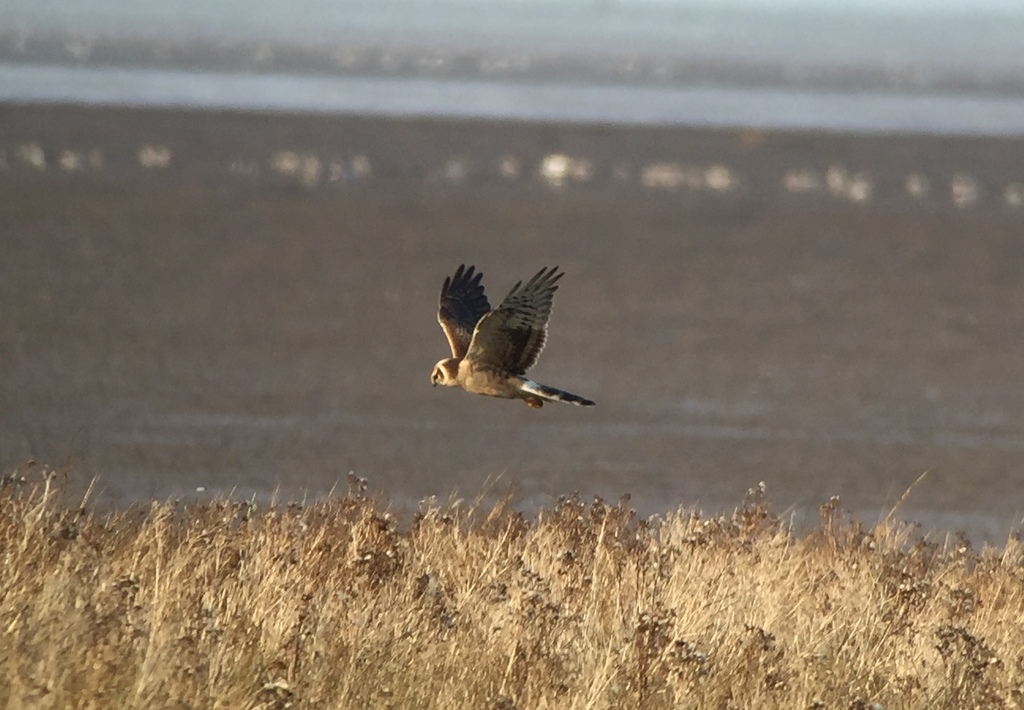
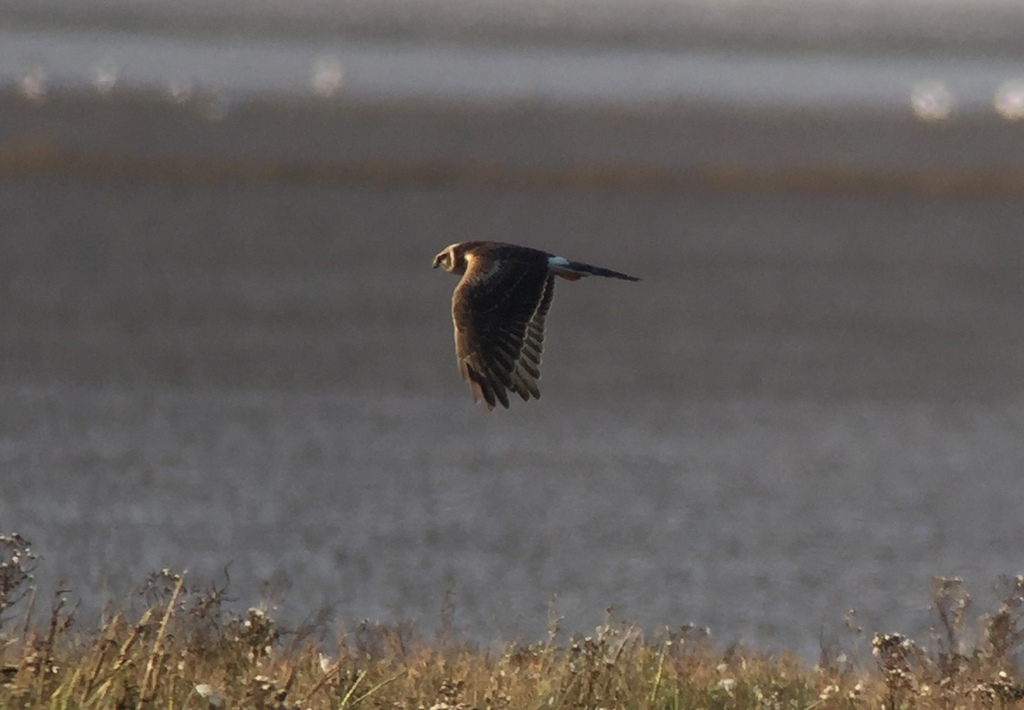
 Pallid Harrier – the juvenile still delighting the crowds at Snettisham
Pallid Harrier – the juvenile still delighting the crowds at Snettisham
I managed to capture some video of it hunting today which really captures the distinctive flight:
There has been a lot of debate about how many Pallid Harriers have been present in Norfolk and elsewhere this autumn. The Snettisham bird has lost a central tail feather – the replacement grey and black barred feather is now growing in its place and can be seen in the photo of its upperparts below. This allows us to identify it as the same bird as one which was present in Lincolnshire, just across on the other side of the Wash, in late October / early November. Analysing recent photos, there is also some evidence to suggest it is the same as the Pallid Harrier which we saw on a tour in mid November, along the North Norfolk coast at Warham.
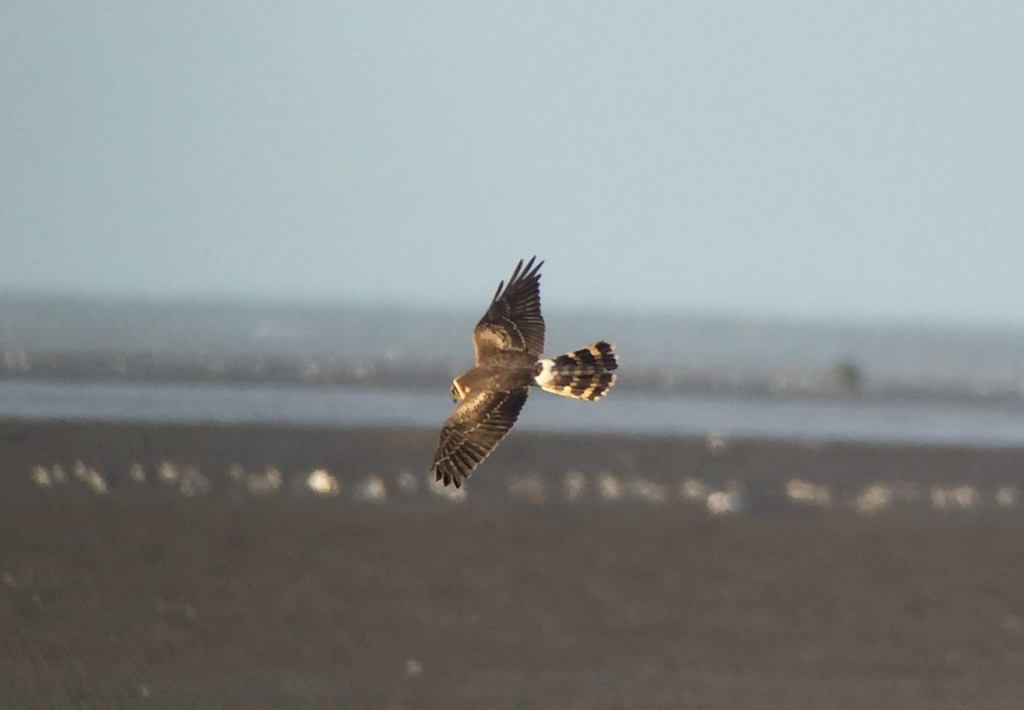 Pallid Harrier – one new central tail feather is now growing back
Pallid Harrier – one new central tail feather is now growing back
After performing for the crowds for a while, the Pallid Harrier dropped down out of view. While we were waiting for it to reappear, there were lots of other birds to look at. A Great White Egret flew up from the saltmarsh on the edge of the Wash briefly, dwarfing the nearby Little Egrets. Another large white bird circling round later was a juvenile Spoonbill. A Barn Owl appeared, hunting over the short grass behind us. And all the time, we could see the vast flocks of waders out across the mudflats of the Wash, occasionally whirling round.
Over the space of the next hour or so, the Pallid Harrier only put in a brief appearance until suddenly it flew up from the saltmarsh, did a quick fly round and landed on a post not far from where I was standing. The light was starting to fade by this stage and we were looking towards the setting sun, but it was a great view through the scope as it perched on the post preening. When it flew off again to resume hunting, that was my cue to call it a day and head for home.
 Pallid Harrier – perched on a post preening late afternoon
Pallid Harrier – perched on a post preening late afternoon
All of which just goes to show how exciting the birding can be here in Norfolk in winter! If you would like to join one of our Winter Tours and share in the excitement, please get in touch.
















